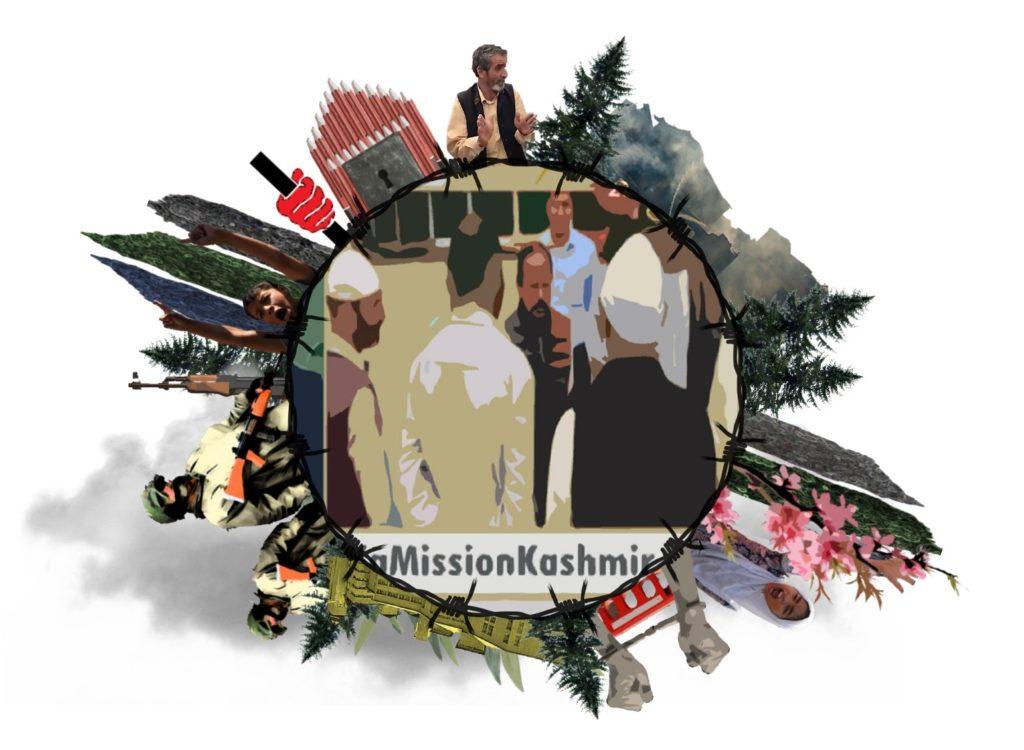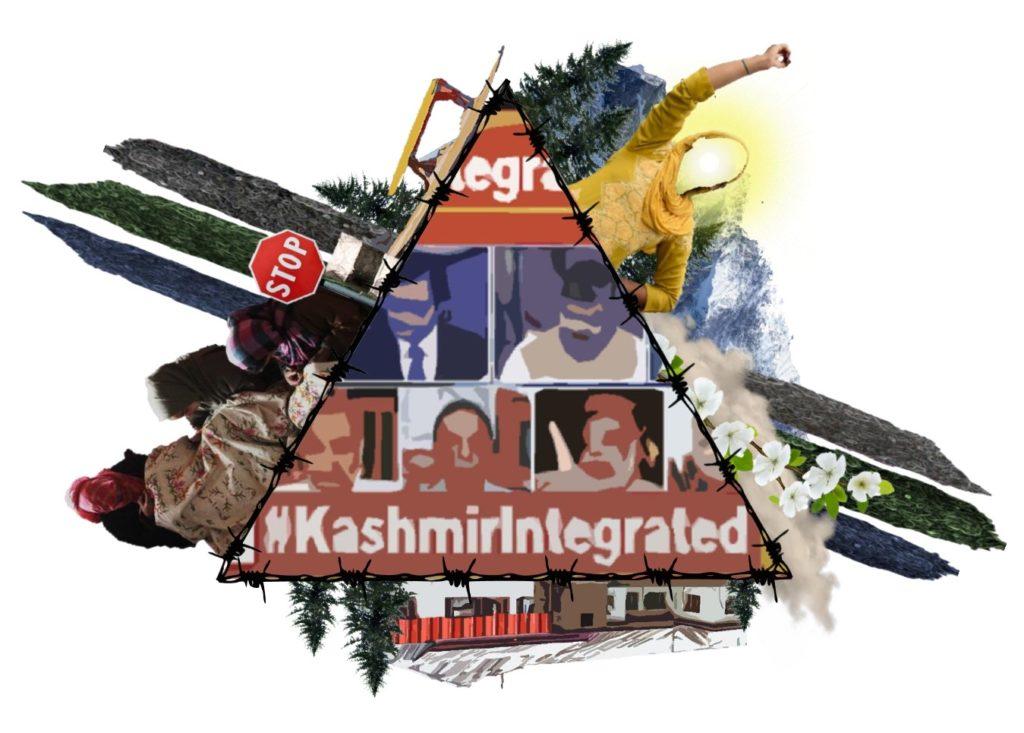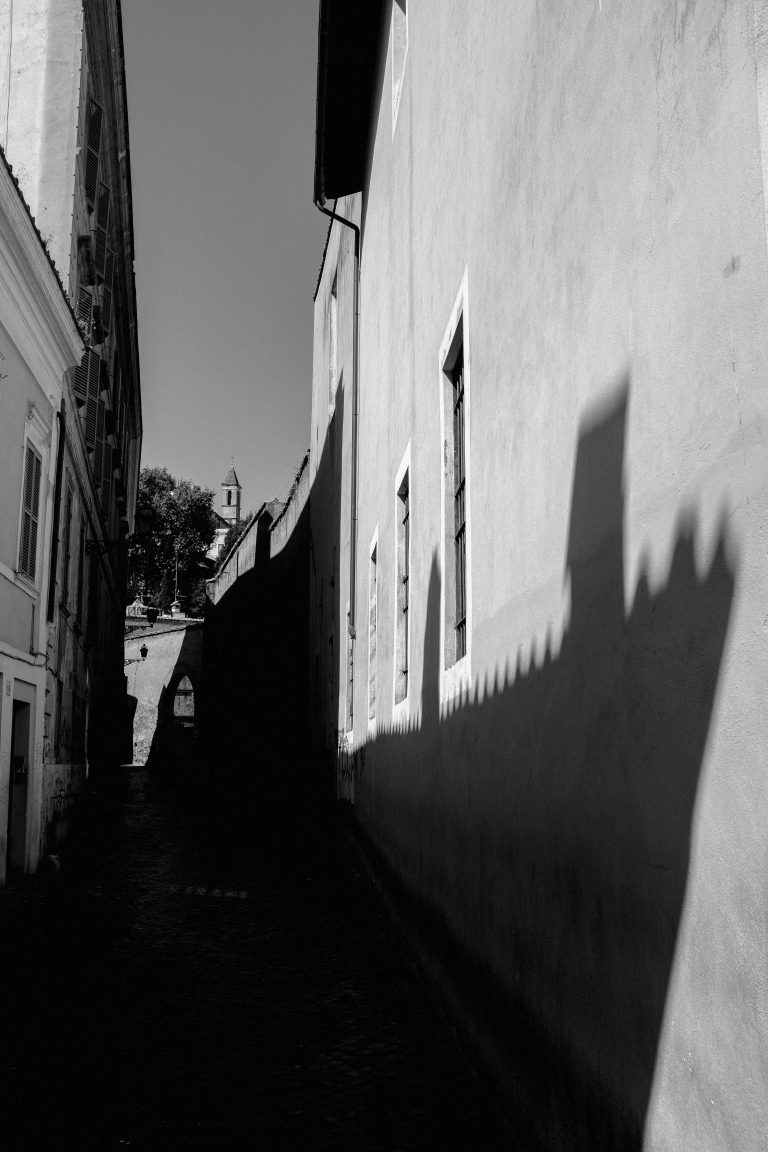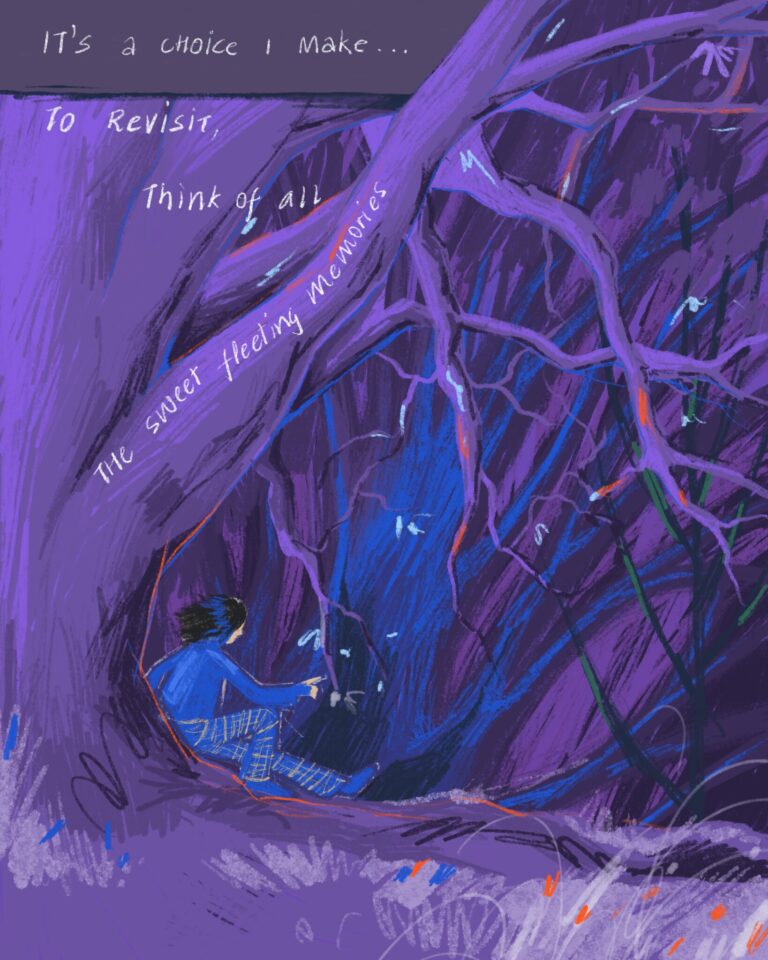(un)shaping perspectives on Kashmir
The pieces draw attention to the issues with the Indian mainstream media’s representation of Kashmir and Kashmiris. This raises a significant question: how does the media shape discourse? In an attempt to answer this, these pieces throw light on the complex (extra)ordinary lives of Kashmiris. An alternate description of life and the people of Kashmir –one that does not fit into the rigid, monocausal narratives as continually depicted by traditional media. The illustrations are centred around the news debates on Kashmir in the aftermath of August 5, 2019 –the abrogation of article 370. The elements in each piece symbolise the tensions in the valley at the time when the mainstream media was fixated on positing a certain description of the political conditions in the region.In order to add a small sense of balance and to remind us of humaneness when speaking of Kashmir, each piece is reinforced with a floral element.
#DovalKaMissionKashmir
Shortly after August 5, 2019, while the valley was under strict military lockdown with all forms of communications barred, the national security advisor travelled to Kashmir for a supposed assessment of the situation on the ground. In a strange photo-op that took to the media immediately, the advisor was seen on the streets, surrounded by a few local Kashmiri men. Discussions in popular news debates (such as the one in the centre of the piece) stressed on the normalcy, calm, and peace in the valley. Outside the circular frame of barbed wire, symbolic of the lack of transparency of such reportage, a collage of elements present an entirely different story; one based on people’s conditions at the time –in stark contrast to the narrative presented within the circle. Let us begin with the picture of a young teenage boy protesting the move amidst a demonstration in Srinagar on August 23, 2019 [1]. To its right we have a red hand on the bar: symbolic of the hundreds of unlawful and arbitrary detentions that were taking place. Next, is a set of pencils with a metal lock over it symbolising the schools and educational institutions that were turned into army camps overnight, to accommodate the additional deployment of troops. This is followed by the image of a local man who was one of the men accompanying the advisor on his inspection. When the advisor asked a young boy if he is happy that the schools are closed, implying that he no longer has to worry about things like homework, this man said candidly ‘khush kaun hai yaha? Yaha koiee khush nahi hai’ (Who is happy here? Nobody.) [2] This part of the clip was omitted by several news channels. This is an essential element of the collage: this candid response from the man was a political statement which demanded attention. Next to the man is a picture of the residential houses in Nawakadal, Srinagar which were razed to the ground in an encounter earlier this year [3]. This is again followed by an image of a young girl in protest [4]. The building in green is a major hospital, SKIMS, placed there to symbolise the curbs in accessing healthcare and medical attention by the locals. Finally, to close the circle, an army troop member, whose image appears twice, signifying the militaristic infrastructure in the region.
#HistoricDecisions
The second piece is a collage placed around a quadrilateral shaped screengrab of a news debate held shortly after August 5, 2020. It starts with an image of the couple from the promotional video released by JK Tourism Department in 2017 titled, ‘Kashmir: The Warmest Place on Earth’ which featured a young Indian couple on a honeymoon trip to Srinagar. In the video, an elderly Kashmiri man (whom the couple mistake as their assigned driver) spends an entire day touring them around. The video received backlash from Kashmiris for whitewashing the reality of life in a militarised Kashmir and portraying Kashmiris as docile caricatures with no agency of their own. This element is followed by an illustration of hands on the prison bars symbolising the violent and excessive use of force by the Indian security forces on the students during protests in 2017. This is followed by an image of a military personnel in a bunker pointing the gun at a woman in the distance- waving the red flag. The red is to symbolise the global movement of solidarity #RedforKashmir which allowed for people in India and across the world to show support for the Kashmiris who were locked up inside their own homes. Finally, beneath the quadrilateral, an image of the first issued domicile certificate to a non-Kashmiri, in yellow colour (worn by a woman in protest in the next piece). Overlaid on the certificate is an AK-47, as if to ensure its making and the process of dispossession it has come to symbolise.
#KashmirIntegrated
The final piece begins with a screengrab of a popular news show, shaped as a triangle, celebrating the removal of Article 370 and 35A. The collage in this piece draws attention to the economic disenfranchisement of Kashmiris due to the ongoing lockdowns that have led to catastrophic losses. It begins with a group of young women embroidering a curtain cloth [5] who get paid less than INR 10 per hour for working on curtains that ultimately sell for thousands. This image is followed by a stop sign –offering an explanation of the stagnant shikara (Kashmiri houseboat) placed next to it. Daily wage workers, including shikara walas (boatmen), have found themselves unemployed; they are barely able to make ends meet given the unstable situation in the region. On the other side of the triangle, a woman appears [6]- raising slogans and standing in demand for better living conditions, a life with dignity and freedom. Beneath the triangle, an image of the cyber police cell, symbolising the overt and hostile crackdown on dissent and freedom of expression on and in Kashmir.
An essential part of these artworks are the three bars in the backdrop- which are reshaped holes that the people of Anchar dug out in defiance of the arbitrary troop movement in the residential localities. These holes, dug to bar hostile entry, here perform the task of holding the pieces together.
[1] Idrees Abbas/SOPA Images/LightRocket via Getty Images
[2] YouTube video. Hindustan Times. ‘Article 370 | Ajit Doval visits Kashmir’s Anantnag, interacts with locals ahead of Eid’
[3] ‘Kashmir homes reduced to rubble during gun battle’. Tauseef Mustafa/AFP
[4] Kashmiri girl from a protest in Srinagar, on August 23, 2019 | Reuters
[5] Ifsha Zehra/2019
[6] Chaudry, S, 2019, ‘Masked soldiers, barred mosques and constant surveillance: Inside Kashmir under lockdown’. Open Democary.
